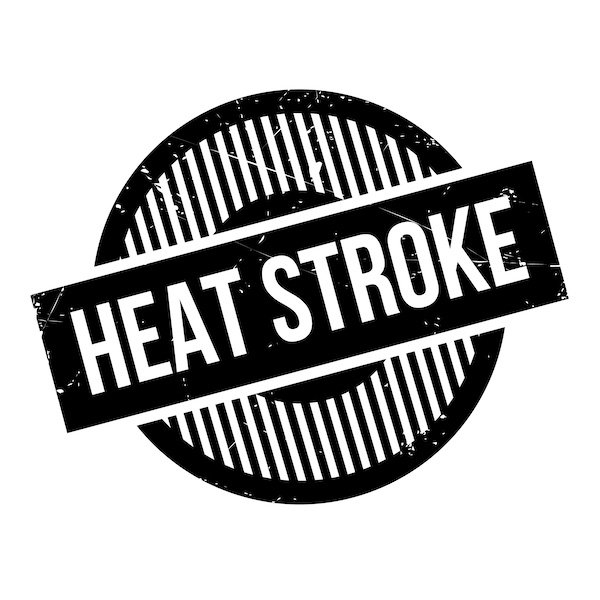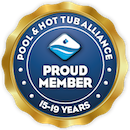As the sun’s rays stretch longer and the mercury inches higher, the allure of summertime beckons us outdoors. However, amidst the bliss of poolside lounging, lurks a silent threat: heat-related illnesses. Ignoring the signs of heat exhaustion or heatstroke can turn a sun-soaked day into a medical emergency. So, as we embrace the warmth of summer, it’s crucial to arm ourselves with the knowledge to recognize and combat these potentially life-threatening conditions.
Heat Stroke vs. Heat Exhaustion: The Heat Wave Havoc
As the mercury climbs and the sun beats down, our bodies engage in a delicate dance with the heat. However, this dance can sometimes turn into a perilous journey fraught with danger, marked by two distinct but closely related adversaries: heat stroke and heat exhaustion. Distinguishing between the two is crucial, as mistaking one for the other can lead to dire consequences.
Heat Stroke: The Scorching Siege
Heat stroke stands as the ultimate battle against extreme heat. It occurs when the body’s core temperature skyrockets to alarming levels, surpassing the threshold of 104°F (40°C). This dangerous escalation is often the result of prolonged exposure to high temperatures and humidity, overwhelming the body’s ability to regulate its internal thermostat.
Symptoms
- Dry, Hot Skin: Contrary to heat exhaustion, the skin feels hot and dry due to the cessation of sweating.
- Rapid Heart Rate: The heart races as it struggles to maintain circulation amidst the heat onslaught.
- Elevated Body Temperature: A core body temperature exceeding 104°F (40°C) is a hallmark sign of heat stroke.
- Neurological Symptoms: Seizures, hallucinations or loss of consciousness may occur in severe cases
Heat Exhaustion: The Warning Prelude
Heat exhaustion serves as a warning sign, signaling that the body’s cooling mechanisms are under strain. It typically arises from prolonged exposure to high temperatures and inadequate hydration, resulting in excessive fluid and electrolyte loss through sweat.
Symptoms
- Profuse Sweating: The body attempts to cool itself through copious sweating.
- Pale, Clammy Skin: Skin feels cool and moist due to the perspiration.
- Fatigue and Weakness: Energy levels plummet as the body struggles to cope with the heat.
- Muscle Cramps: Painful spasms in the muscles, particularly in the legs and abdomen, due to electrolyte imbalance.
- Nausea and Dizziness: Gastrointestinal distress and lightheadedness may accompany heat exhaustion.
- Headache and Fainting: Symptoms of dehydration and inadequate blood flow to the brain.
Differentiating Heat Stroke from Heat Exhaustion
Distinguishing between heat stroke and heat exhaustion is crucial for prompt and appropriate intervention.
Heat Stroke
- Severity: Heat stroke represents a severe and potentially life-threatening condition compared to heat exhaustion. It requires immediate medical attention due to the risk of organ damage and even death.
- Central Nervous System Impact: Heat stroke often manifests with neurological symptoms such as confusion, disorientation, or loss of consciousness, indicating significant impairment of brain function.
- Skin Response: The skin in heat stroke tends to be hot and dry, signaling a breakdown in the body’s cooling mechanisms and a cessation of sweating.
- Immediate Intervention: Recognizing heat stroke promptly is critical. Delayed treatment can exacerbate complications and increase the risk of long-term health consequences.
Heat Exhaustion
- Warning Sign: Heat exhaustion serves as an early warning sign of heat-related stress. While serious, it is generally considered less severe than heat stroke and can often be managed with appropriate rest and hydration.
- Sweating Response: Unlike heat stroke, individuals with heat exhaustion typically continue to sweat profusely as the body attempts to cool down, albeit less efficiently.
- Recovery Period: Heat exhaustion may require a period of recovery but is less likely to result in long-term complications if addressed promptly. Adequate rest and hydration are usually sufficient for recovery.
- Progression Risk: While heat exhaustion can progress to heat stroke if left untreated, timely intervention can prevent escalation and mitigate the risk of severe outcomes.
Escaping the Scorch: Unveiling Lesser-Known Heat-Related Illnesses
While heat stroke and heat exhaustion dominate the conversation, this exploration delves deeper, shedding light on lesser-known conditions that lurk beneath the blazing sun.
Heat Cramps
Heat cramps are painful muscle spasms that occur during intense physical activity in hot environments. They typically result from dehydration and electrolyte imbalances caused by excessive sweating.
Symptoms
- Intense muscle pain or spasms
- Heavy sweating
- Fatigue
Heat syncope
It is also known as heat collapse, is a heat-related illness characterized by a sudden, temporary loss of consciousness or fainting, typically occurring during prolonged exposure to high temperatures. It occurs when the body’s blood vessels dilate in response to heat, causing blood pressure to drop and resulting in a brief loss of consciousness.
Symptoms
- Dizziness
- Lightheadedness
- Feeling faint
- Temporary loss of consciousness
Heat Rash
Heat rash, also known as prickly heat or miliaria, is a common skin condition that occurs when sweat ducts become blocked, trapping sweat beneath the skin’s surface. This blockage leads to red, itchy bumps or blisters, often accompanied by a prickling or stinging sensation. Heat rash typically develops in hot, humid environments where sweat production is high and can affect areas of the body covered by clothing or prone to friction, such as the chest, neck, back, groin, or armpits.
Symptoms
- Red bumps or blisters
- Itching
- Prickling or stinging sensation on the skin
Staying Cool and Safe: Essential Tips for Beating the Heat
As summer temperatures soar, it’s essential to keep your cool while soaking up the sun. Whether you’re lounging poolside or exploring the great outdoors, staying safe in the heat is paramount.
- Hydrate Like it’s Your Job: Sip on water regularly, especially if you’re indulging in poolside cocktails. Opt for hydrating snacks like watermelon or cucumber slices to keep your fluid levels up.
- Seek Shade Savvily: Embrace the umbrella or find a cozy spot under a tree. Direct exposure to the sun can lead to overheating, so give your skin some shade now and then.
- Dress Light, Dress Right: Loose-fitting, breathable clothing is your summer wardrobe MVP. Say yes to flowy fabrics like cotton or linen, and bid adieu to sweat-soaked discomfort.
- Slather on SPF: Sunscreen isn’t just for the beach. Even if you’re poolside, your skin needs protection from those UV rays. Choose a broad-spectrum sunscreen with at least SPF 30, and reapply every two hours.
- Cooling Essentials: Pack a mini cooler with chilled towels or invest in a portable fan. These little lifesavers can provide instant relief from the sweltering heat.
- Know the Signs: Familiarize yourself with the symptoms of heat-related illnesses like heat exhaustion or heatstroke. If you start feeling dizzy, nauseous, or unusually fatigued, it’s time to seek shade and hydrate pronto.
- Call 911: If someone shows severe symptoms of heatstroke such as confusion, fainting, or seizures, do not hesitate to call emergency services immediately.
Pool Safety First
While splashing around in the pool is a summer staple, safety should never take a backseat. Keep an eye out for your fellow swimmers, especially children, and always have a designated adult supervisor on duty.
Navigating heat-related illnesses like heat stroke and heat exhaustion requires awareness, preparation, and swift action. By recognizing the symptoms and implementing preventive measures, you can enjoy the summer safely and comfortably. Remember to stay hydrated, seek shade, and keep an eye out for signs of distress, especially when lounging by the pool. And if you’re considering transforming your backyard into a refreshing oasis, Hawaiian Pools is here to help. Contact us today for expert advice and a free consultation to make your summer dreams a reality. Stay cool, stay safe, and make the most of your summer!







